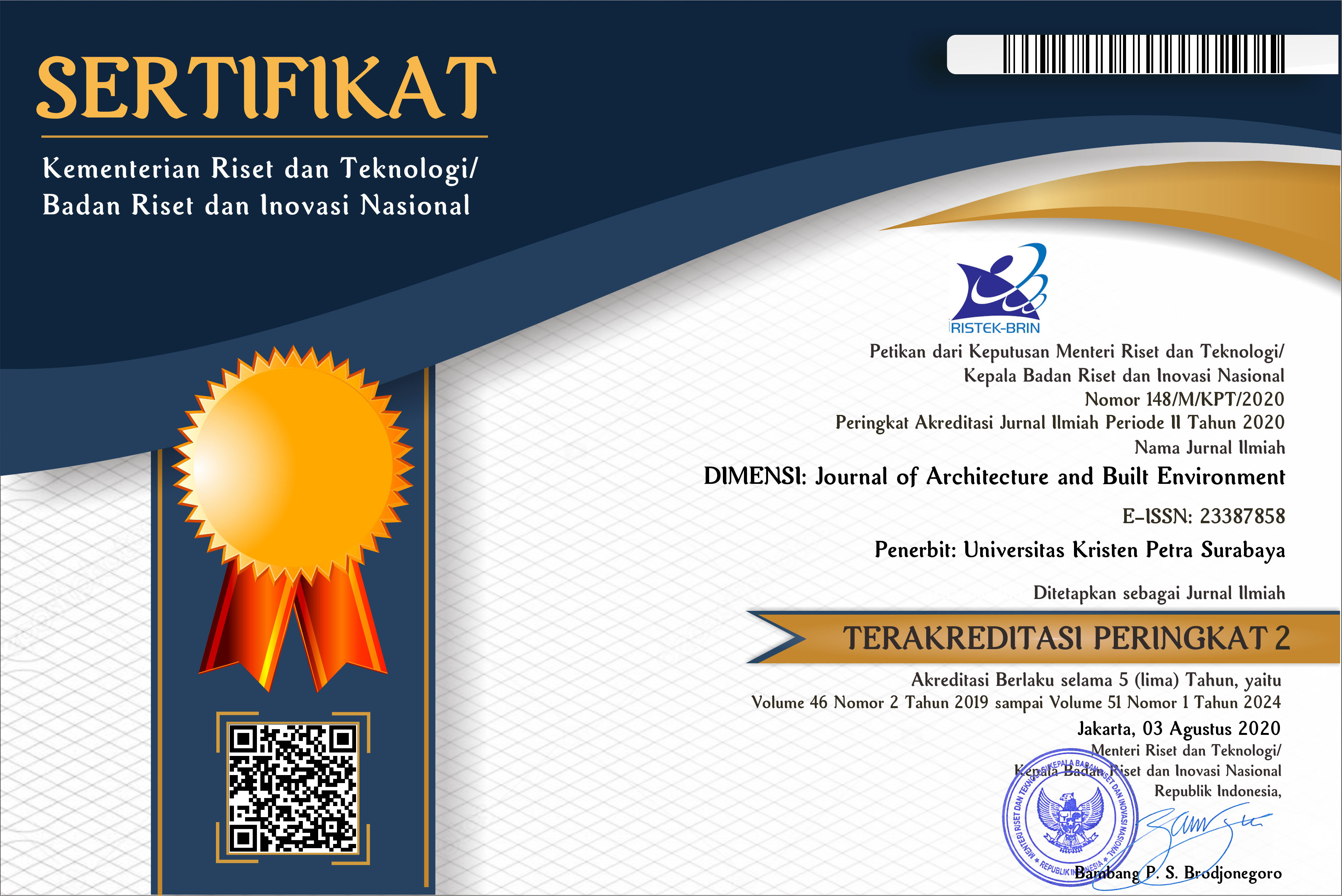STUDI ADAPTASI RUMAH VERNAKULAR KUTAI TERHADAP LINGKUNGAN RAWAN BANJIR DI TENGGARONG
 :
:
https://doi.org/10.9744/dimensi.40.2.89-98
Keywords:
Adaptation, house, vernacular, flood.Abstract
Kutai vernacular houses represent Kutai tradition in East Kalimantan. Kutai Vernacular Houses are spread over Kabupaten Kutai Kartanegara (Kukar). It is closely related to the culture of majority in Kukar. The locus of the research is Tenggarong, a sub-district of Kukar. Kukar now faces flood due to rainy season. Both climate change and environmental impact raise the water level, but Kutai vernacular houses are still exist. How the Kutai vernacular houses addapt in flood zone is the aim of the research. The research method is analyzing the changes of structure and construction of Kutai Vernacular Houses, from the beginning of the house built to the latest condition. The conclusion: there are some long lasting adaptation while others are newer adjustments in order to keep Kutai Vernacular Houses survived.Downloads
Download data is not yet available.
Downloads
Published
2013-12-01
How to Cite
Zakiah, H., & Octavia, H. C. (2013). STUDI ADAPTASI RUMAH VERNAKULAR KUTAI TERHADAP LINGKUNGAN RAWAN BANJIR DI TENGGARONG. DIMENSI (Journal of Architecture and Built Environment), 40(2), 89-98. https://doi.org/10.9744/dimensi.40.2.89-98
Issue
Section
Articles
License
Authors who publish with this journal agree to the following terms:
- Authors retain copyright and grant the journal right of first publication with the work simultaneously licensed under a Creative Commons Attribution License that allows others to share the work with an acknowledgement of the work's authorship and initial publication in this journal.
- Authors are able to enter into separate, additional contractual arrangements for the non-exclusive distribution of the journal's published version of the work (e.g., post it to an institutional repository or publish it in a book), with an acknowledgement of its initial publication in this journal.
- Authors are permitted and encouraged to post their work online (e.g., in institutional repositories or on their website) prior to and during the submission process, as it can lead to productive exchanges, as well as earlier and greater citation of published work (See The Effect of Open Access).

















